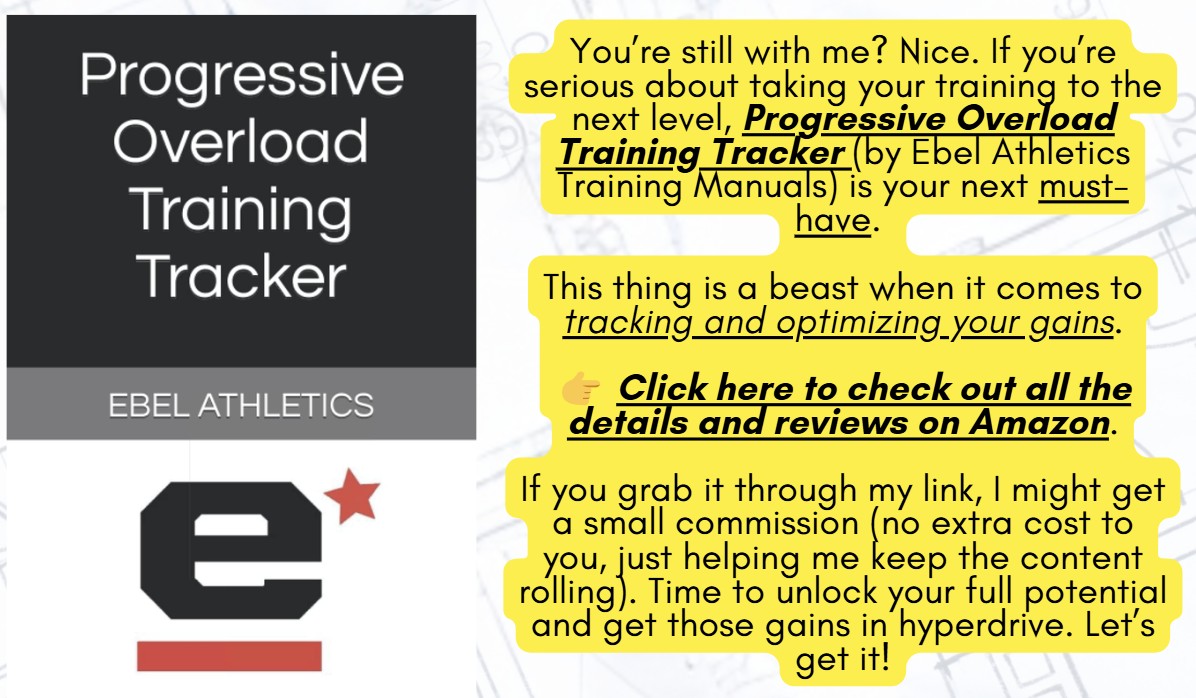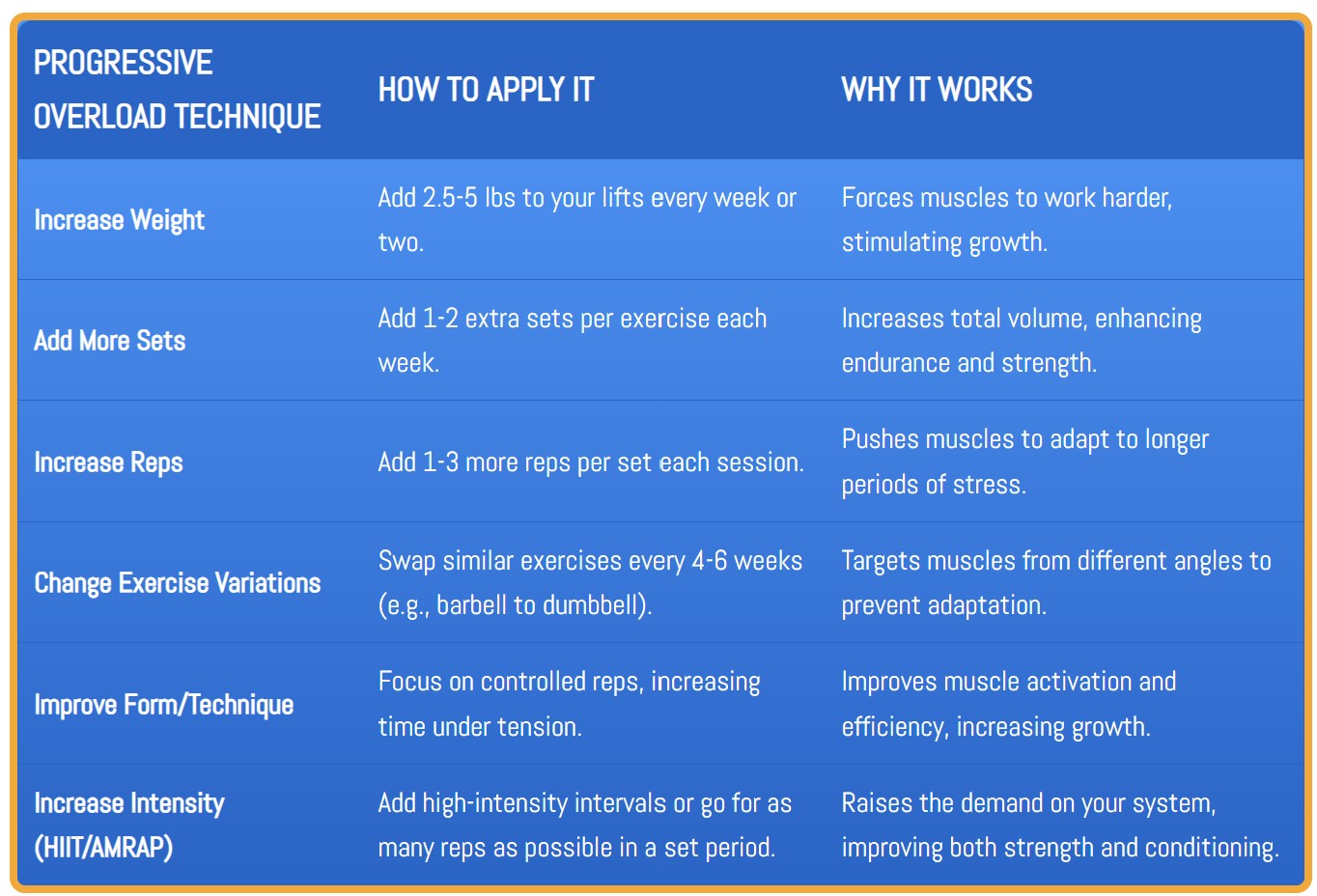Here’s the truth: progressive overload isn’t supposed to be easy. It’s designed to challenge you. If you think that just increasing weight and doing more reps over time will somehow make your workouts feel like a walk in the park, you’ve got another thing coming. The secret to muscle growth and strength isn’t just lifting heavier weights, it’s about pushing your body to adapt—constantly. And that never gets easy. It shouldn’t.
Progressive overload is essential in strength training, but many people fail to understand its deeper concept. Adapting over time leads to muscle growth, not just a gradual increase in weight. It’s about improving endurance, stimulating your muscles to grow stronger, and increasing your total volume without causing your body to plateau.
Let’s break this down.
What is Progressive Overload and Why is it So Important?
The principle of progressive overload is simple: continually increasing the stress placed on your body during workouts, either by adding sets, reps, or weight. This constant increase forces your body to adapt—getting stronger and more resilient over time. This principle is critical for achieving long-term gains.
You’re not just lifting heavy stuff for the sake of it. You’re pushing your muscles beyond their current limits, forcing them to grow. And that takes more than just adding a little more weight every week. Incorporating variety into your workouts is key. Whether you’re focusing on power, endurance, or muscle size, progressive overload is the tool that makes it all possible.
Progressive Overload Techniques Chart
Track your progress with these progressive overload techniques to ensure continuous muscle growth and avoid plateaus. Implement them smartly for long-term results.
Why Progressive Overload Never Gets Easier
Here’s the kicker: progressive overload is never going to get easier. Your body will always find ways to adapt. Growth is a constant challenge. If you think your workouts will become “easy” by gradually increasing weight, you’re missing the point.
Here’s the reality: each time you increase your training intensity or the volume of your workouts, your body has to keep adapting. And over time, that adaptation leads to bigger plateaus—the kind that can leave you frustrated. But don’t worry. These plateaus don’t mean you’re failing. They just mean your body needs new stress to stimulate growth.
The more you push yourself, the more demand you place on your body. The higher the intensity, the greater the return—and that means the longer the road to full recovery.
How to Apply Progressive Overload in Your Workouts
- Increase Your Weight Gradually
This one’s obvious: weight increases lead to strength increases. But don’t go overboard. Start small and let your body adapt before pushing further. - Add More Sets or Reps
Add more volume to your workouts by doing extra sets or more reps. This keeps the challenge going, without always needing more weight. - Increase the Intensity
Work on making each set harder by focusing on proper form and pushing yourself to failure. Sometimes it’s not about more weight—it’s about putting more effort into every single rep. - Focus on Compound Movements
Big, compound exercises like squats, deadlifts, and bench presses are powerful tools to increase strength and muscle size. These exercises work multiple muscle groups, so they place a larger demand on your body to adapt. - Implement Periodization
This is about switching up your rep ranges over time to keep your body from getting too comfortable. For example, one cycle might focus on strength (lower reps, higher weight), and the next might focus on hypertrophy (higher reps, moderate weight).
Why You’ll Still Hit Plateaus, No Matter How Much You Train
| Plateau Problem | Solution | Why It Works |
|---|---|---|
| Same Routine Every Week | Change your exercises every 4-6 weeks. | Forces your body to adapt to new stress, keeping progress steady. |
| Not Increasing Weight | Gradually add more weight or reps each session. | Keeps muscles under constant tension, stimulating growth. |
| Sticking to One Rep Range | Vary your rep ranges (strength, hypertrophy, endurance). | Different rep ranges hit different muscle fibers for better overall growth. |
| Lack of Intensity | Add intensity techniques (drop sets, supersets). | Maximizes muscle fatigue and boosts growth even when stuck in a plateau. |
| Ignoring Recovery | Prioritize rest and recovery (sleep, nutrition). | Without recovery, your muscles don’t repair and grow. |
| Not Tracking Progress | Track your lifts and workouts. | Helps you stay on top of your progress and see what needs to change. |
Here’s where it gets tough: progressive overload isn’t a guarantee that you’ll never plateau. Plateaus are just a part of the journey. They happen when your body’s adapting too well to the same stress you’ve been putting it through. Your muscles get used to the same routine, the same resistance, and they stop responding. This is where the real test begins.
The key to overcoming plateaus is changing the stress. Varying your sets, reps, and even your exercise lineup can stimulate new muscle growth, allowing you to keep getting stronger. If you’re not altering the way you approach your workouts, you’re just throwing stuff at the wall, hoping something sticks.

Q&A: Answers to Common Questions on Progressive Overload
Q: How do I know if I’m progressing enough?
A: The key is tracking your workouts. Are you lifting more weight, doing more sets, or increasing reps each week? If you’re not, your body isn’t facing enough challenge to stimulate growth. You need to keep pushing the limits.
Q: Can I apply progressive overload to cardio?
A: Absolutely. Progressive overload doesn’t just apply to strength training. Increase the intensity of your cardio sessions by pushing longer durations or faster speeds. Your cardiovascular system will get stronger, and your endurance will skyrocket.
Q: How often should I change my workout?
A: To keep adapting and avoiding plateaus, aim to switch up your workouts every 4-6 weeks. Alter the number of sets, reps, and even the exercises you’re using.
Q: Can I overdo it with progressive overload?
A: Yes. Overtraining is a real issue. If you increase the intensity too much without adequate rest and recovery, your muscles won’t get the chance to adapt and grow. It’s about finding the right balance between stress and recovery.
Q: What’s the best way to recover after intense progressive overload training?
A: Recovery is key. Focus on nutrition, sleep, and active rest. Your muscles grow when they’re recovering, not when you’re in the gym.
Final Thoughts: Keep Pushing, Keep Growing
If you’re serious about getting stronger, progressive overload is your best friend. But let’s get something straight: it’s not going to get easier. And if you think it is, you’re doing it wrong. The key is continually adapting and challenging your body in new ways. Don’t fall into the trap of doing the same thing over and over, expecting different results.
By employing progressive overload correctly, you’re guaranteeing growth in the most efficient way possible. So, if you’re stuck, frustrated, or just tired of hitting plateaus, it’s time to push harder. You’ve got this.

